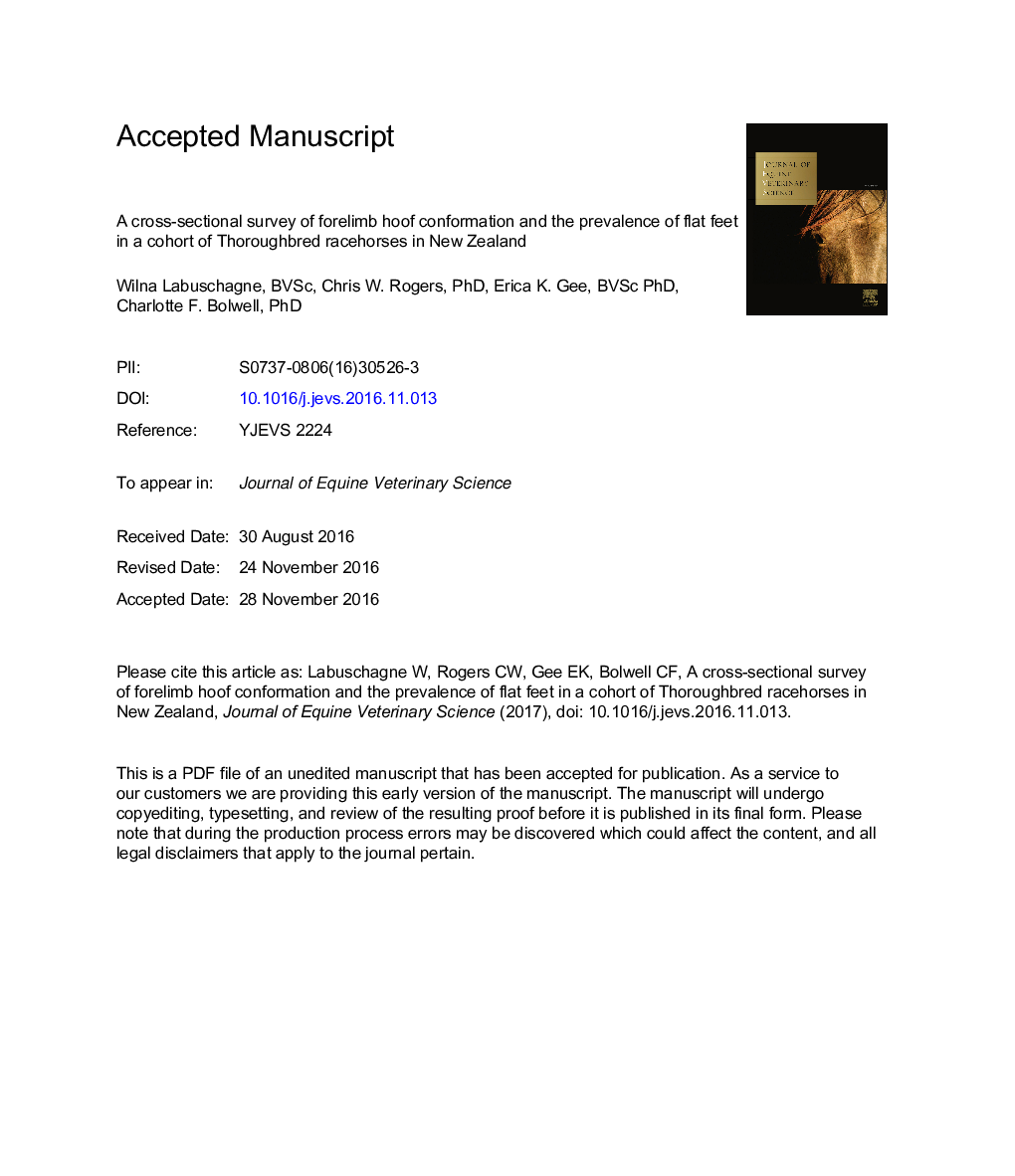| کد مقاله | کد نشریه | سال انتشار | مقاله انگلیسی | نسخه تمام متن |
|---|---|---|---|---|
| 5535428 | 1551549 | 2017 | 22 صفحه PDF | دانلود رایگان |
عنوان انگلیسی مقاله ISI
A Cross-Sectional Survey of Forelimb Hoof Conformation and the Prevalence of Flat Feet in a Cohort of Thoroughbred Racehorses in New Zealand
ترجمه فارسی عنوان
بررسی مقطعی از همبستگی قوزک پا و شیوع پاهای تخت در گروه روروک مخصوص بچه ها در نیوزیلند
دانلود مقاله + سفارش ترجمه
دانلود مقاله ISI انگلیسی
رایگان برای ایرانیان
موضوعات مرتبط
علوم زیستی و بیوفناوری
علوم کشاورزی و بیولوژیک
علوم دامی و جانورشناسی
چکیده انگلیسی
Racehorses in New Zealand predominantly train counter clockwise. This training pattern has been associated with between forelimb differences in bone mineral density profile and asymmetrical limb loading after training. At present, there is limited data on the hoof conformation of these racehorses. Distal forelimb and digital hoof conformation data were collected from 75 Thoroughbred racehorses (2-5 years old) from two training yards. Digital conformation was subjectively graded, and multiple hoof measurements were made with a modified tire gauge (sole and sulci depth) and from digital photographs. All the horses were shod by two registered master farriers within a median of 15 (interquartile range [IQR], 1-25) days before measurement. There were few distal limb conformation abnormalities scored. Most (62/75) horses presented with some deviation from normal hoof parameters, with 2 (IQR, 1-3) abnormalities reported per horse. The most common hoof abnormality was uneven sulci, which was identified in 43 horses and 59 affected hooves, followed by higher medial hoof wall height in 38 horses and 53 affected hooves. Many of the linear and hoof angle measurements and their ratios were within the bounds reported within the literature and indicative of a balanced foot. The length and width measurements increased with horse age. The dorsal hoof wall (DHW) length:heel length ratios were consistently less than 3:1, and the absolute difference between toe and heel angle was generally greater than 5°. Between limb hoof variation was identified for a number of the morphologic measurements including frog length and sole length and the ratio of sole width:sole length. Flat feet (lack of concave solar surface) were identified in 21/75 (28%) horses and in 28/150 (19%) forelimb hoofs. More horses had a flat left foot (10/75) than right foot (4/75), but seven horses had both feet classified as being flat. Flat feet had 2.4 (1.1-5.6, P = .036) greater odds of presenting with uneven sulci. These data indicate that uneven sulci depth and flatter hooves with may be a typical presentation of Thoroughbred feet. Asymmetry in measurements between limb may reflect the greater loading of the left forelimb when race training counter clockwise.
ناشر
Database: Elsevier - ScienceDirect (ساینس دایرکت)
Journal: Journal of Equine Veterinary Science - Volume 51, April 2017, Pages 1-7
Journal: Journal of Equine Veterinary Science - Volume 51, April 2017, Pages 1-7
نویسندگان
Wilna Labuschagne, Chris W. Rogers, Erica K. Gee, Charlotte F. Bolwell,
